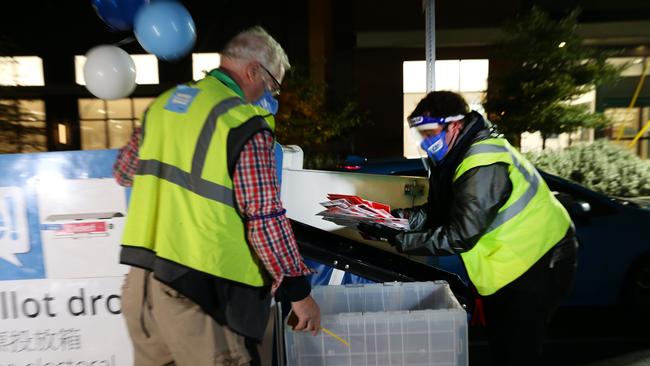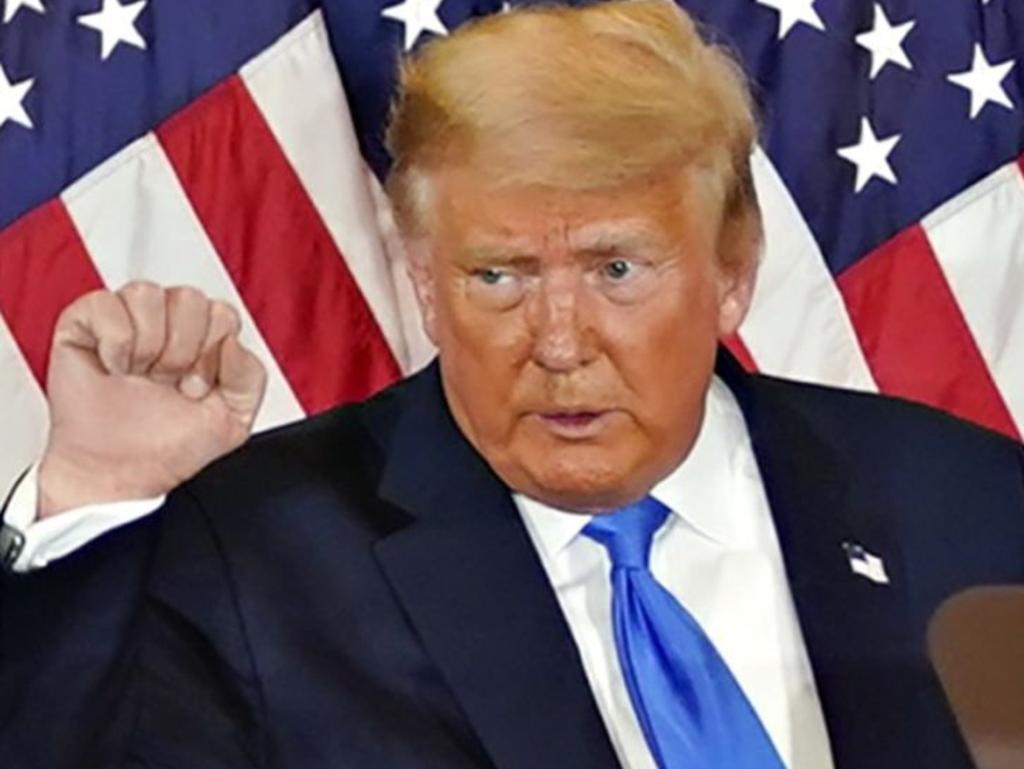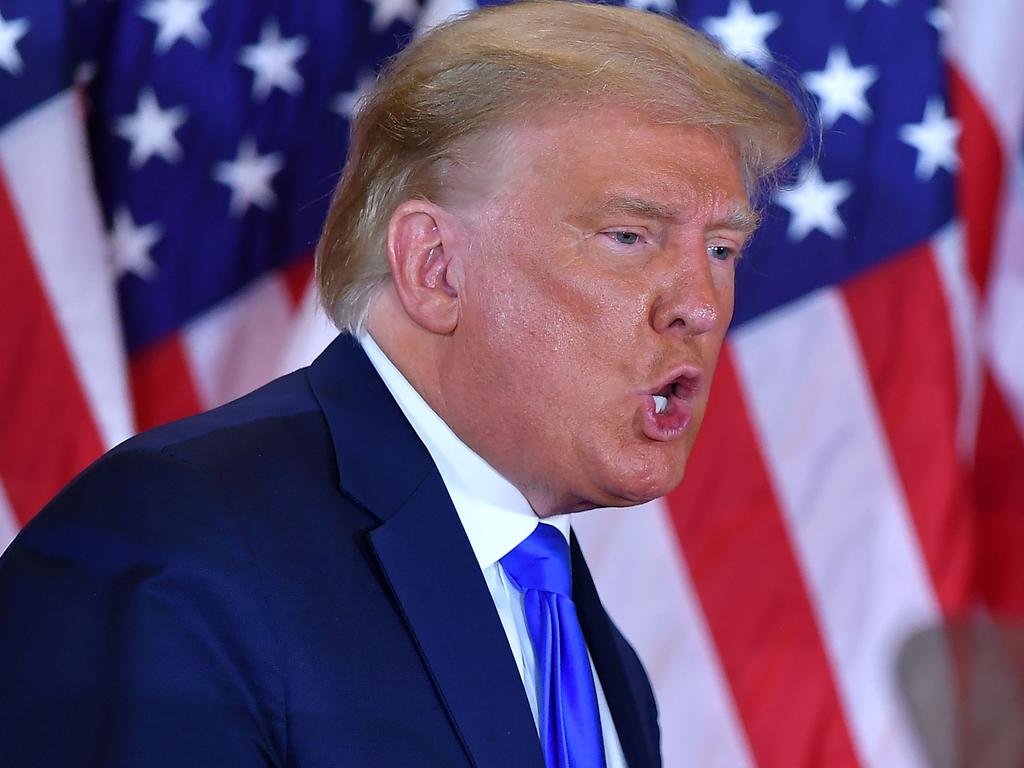US Election: economy, coronavirus and race split polarised electorate down the middle
The portrait of America revealed in the presidential election was one of a deeply divided nation.

The portrait of America revealed in the presidential election was one of a deeply divided nation split between men and women, white and non-white voters, urban and rural residents, college graduates and those who didn’t graduate from college, and differing views on the importance of controlling the pandemic versus preventing further damage to the economy.
A national voter survey conducted for The Wall Street Journal and other news organisations as Americans prepared to vote showed Donald Trump with his strongest support among men, white voters without a college degree, rural residents and those who said the government should put a higher priority on the economy even if it increased the spread of the coronavirus. Democrat Joe Biden was more heavily favoured by women, urban and suburban residents, non-white voters and college graduates.
In an interview on Tuesday (Wednesday AEDT) in Milwaukee, 55-year-old Jeffrey Briggs, a lifelong Democrat and assistant building manager who is black, said he was strongly opposed to the President because of his rhetoric on race.
“People are just fed up with him, with the racial divide he made worse,” he said. “It’s like he did everything he could to prove he was unfit for office.”
In Bucks County, a suburban area near Philadelphia, James Faber and his wife Karen said they approved of Mr Trump’s record on the economy and felt that another coronavirus shutdown would be damaging.
As small-business owners — Mr Faber, 71, owns a car dealership and Mrs Faber runs a childcare centre — they are both dealing with the effects of lockdowns. Mrs Faber, 63, said her business shut down in March and only reopened in June, and business was still down 50 per cent because parents were afraid of the coronavirus. The couple feared that a Biden presidency would further hurt small businesses.
“He’s going to shut the country down,” Mr Faber said of Mr Biden.
The AP VoteCast survey, which included about 140,000 registered US voters nationally sketched, out in great detail the complex mosaic of the 2020 American electorate, a group that broke a turnout record from 2016 when roughly 139 million people voted.
On a central question of the campaign — balancing the spread of a pandemic that has resulted in more than 232,000 reported deaths in the US against further damage to the economy — about two-thirds of voters said it was more important to limit spread of the disease, while a third said limiting additional damage to the economy was more critical. The numbers were similar in the swing states of North Carolina, Pennsylvania, Florida and Georgia.
Among those who think the federal government’s top priority should be reducing the spread, about eight in 10 backed Mr Biden, while about eight in 10 of those who think the first concern should be limiting additional damage to the economy backed Mr Trump.
On Mr Trump’s handling of the pandemic, nearly six in 10 voters nationally said they disapproved of the job he had done, while about four in 10 approved.
David Myers, an 81-year-old parish priest in Guadalupe, Arizona, said he had buried 21 people who had died from COVID-19. He voted for Mr Biden. “He has caused the problems that we have,” he said of the President.
David Yates, 61, a retired contractor who now works at a Lowe’s store, wore a handgun in his belt as he voted for Mr Trump in Millcreek Township, Pennsylvania.
“Explain to me how this is Donald Trump’s fault for this coronavirus,” said Mr Yates.
“This is nothing that anyone could control.”
The federal government’s response to the pandemic was viewed as a factor in making a voting decision by 95 per cent of voters. Mr Biden, who stressed that he would better heed the advice of doctors than Mr Trump has, was backed by slightly more than half of those voters.
Asked who was better prepared to handle the pandemic, about half of voters picked Mr Biden, while a little more than a third picked the incumbent. Mr Trump was viewed as stronger on managing the economy than Mr Biden by about seven percentage points.
The vast majority of voters said they had made up their minds before election day, with about three-quarters saying they have known their choice “all along”. Another two in 10 said they decided over the course of the campaign, while just 5 per cent said they decided in the last few days.
With the strong possibility of delayed tabulations, a quarter of voters said they were very confident that results would be counted accurately, and slightly more than four in 10 said they were somewhat confident. Another quarter said they were not very confident, while 7 per cent said they were not at all confident. Among those people expressing the least confidence, Mr Trump received 60 per cent of the vote.
Mr Biden found stronger support in suburban America, traditionally a critical swing area in presidential elections. He had the support of 57 per cent in those areas, compared to 41 per cent for Mr Trump.
“Every time I see something about Trump, it’s just negative,” said Angel Gaston, 34, who lives in Burnsville, a Minneapolis suburb. She voted for Mr Biden.
Grant Haughton, 77, said he liked how Mr Trump projected toughness on racial-justice protests. “I don’t see any more protests with Trump,” said Mr Haughton, who lives in suburban Sterling Heights, Michigan.
Mr Trump narrowly won a larger share of white voters nationally than Mr Biden, 52 per cent to 46 per cent, while Mr Biden won nine in 10 black voters.
Among Latino and Hispanic voters, Mr Biden won roughly two-thirds of the vote nationally. In the battleground state of Florida, he beat Mr Trump among Hispanics, 62 per cent to 36 per cent.
Mr Trump continued to find strong support in rural America, with 62 per cent backing him there compared to just 36 per cent for Mr Biden.
Voters with less than a college degree were the most likely to support Mr Trump, with 48 per cent of those voters backing him. Mr Biden received the support of 60 per cent of those with a college degree or higher.
The top issue for voters nationally was the pandemic, followed by jobs and the economy, the survey showed. The vast majority held a gloomy view on the nation’s trajectory, with 63 per cent saying it is going in the wrong direction. In the battleground state of Pennsylvania, that number was roughly even with the national total.
Survey participants were equally grim on their assessment of the economic outlook, with six in 10 rating it poor or not very good and four in 10 viewing it as good or excellent.
Mr Biden built an 18 percentage point advantage among women voters. Men were more closely divided, with 49 per cent backing Mr Biden and 48 per cent supporting Mr. Trump.
Each candidate won about nine of 10 votes from his party nationwide, with the independent vote more heavily favouring Mr Biden over Mr Trump, 51 per cent to 33 per cent.
Among those 65 and older, Mr Biden and Mr Trump received roughly equal shares of support. That was also the case in Florida, where seniors accounted for almost a third of the vote.
Mr Biden received substantially more support from voters aged between 18 and 29 than Mr Trump, 63 per cent to 33 per cent.
While both parties sought to expand the electorate, Mr Biden saw stronger support from first-time voters, winning six in 10 of them. More than three-quarter of voters said it was very important for the next president to bring the country together. Within that group, Mr Biden was supported by roughly six in 10.
Three-quarters of voters said it was very or somewhat important for the next president to shake up the political system, and support for Mr Trump and Mr Biden was roughly equal among that group.
On a related question, roughly four in 10 voters said Mr Trump had made Washington work better, while half said worse and roughly one in 10 said he hadn’t changed the nation’s capital.
Mr Biden, who was seeking to be only the second Catholic US president (after Kennedy) narrowly received more support from Catholic voters than Mr Trump, by 52 per cent to 46 per cent.
The survey was conducted from October 28 through November 3 by NORC at the University of Chicago.
It has a margin of error of plus or minus less than 1 percentage point on the full sample.
THE WALL STREET JOURNAL






To join the conversation, please log in. Don't have an account? Register
Join the conversation, you are commenting as Logout